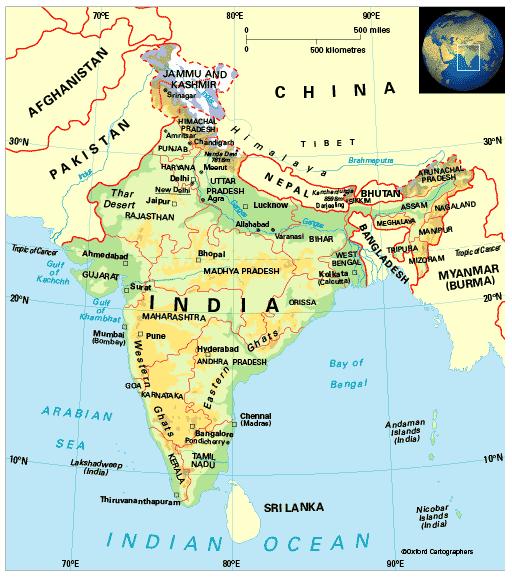Education in India
Joined Commonwealth: 1947 
Population: 1,198,003,000 (2009)
GDP p.c. growth: 4.8% p.a. 1990-2009
UN HDI 2010: world ranking 119
Net primary enrolment: 96.9 % (2008)
Gross tertiary enrolment: 13.5% (2008)
Adult literacy: 62.8% (2006)
There are nine years of compulsory education starting at age six. The primary net enrolment ratio is 96.9%, with a primary female-male ratio of 0.97:1 (2007) and a secondary female-male ratio of 0.88:1 (2008), and gross enrolment ratio for all levels of education combined was 62.6% in 2008. The school year starts in April.
There are more than 200 universities, 9,000 colleges and 1,000 polytechnics, including some 150 medical colleges. There are schemes to reserve places for scheduled (lowest) castes and scheduled tribes in certain colleges and universities, and special boarding schools for talented children with priority given to those from rural areas.
The 2005 Right to Education Bill gave effect to the guarantee in the constitution of the right to education for all children between the ages of 6 and 14. The act requires government schools to provide free education to all admitted children, and private schools to admit at least 25% of children free of charge. Government schools are to be managed by school management committees, mostly composed of parents. Teachers are assigned to a particular school; there are to be no transfers. The National Commission for Elementary Education is to monitor all aspects of elementary education including quality.
The government’s XI Plan (2007-2012), its 11th five-year plan, includes among its targets the achievement of an 85% literacy rate by the end of 2012. It promotes incorporation of vocational education into literacy programmes, giving new-literates the incentive to sustain their interest in literacy.
An Indian primary education initiative, Udaan, was selected as a finalist in the 2006 Commonwealth Education Good Practice Awards. It was set up to provide accelerated learning for drop-out and never-enrolled girls in a remote region of Uttar Pradesh. It emphasised gender equity and diversity and is now being introduced in the formal school system.
In January 2009, the Mumbai Municipal Teacher’s Association’s Adolescent Girls Health Education Programme was selected as a finalist in the 2009 Commonwealth Education Good Practice Awards. The association had carried out a survey that revealed that one of the reasons for girls absenteeism from school was lack of information about their menstruation cycle and hygiene. The programme provided health education to 200,000 girls, aged 8 – 14 years, and reduced the high levels of absenteeism among adolescent girls in more than 1,100 schools.



